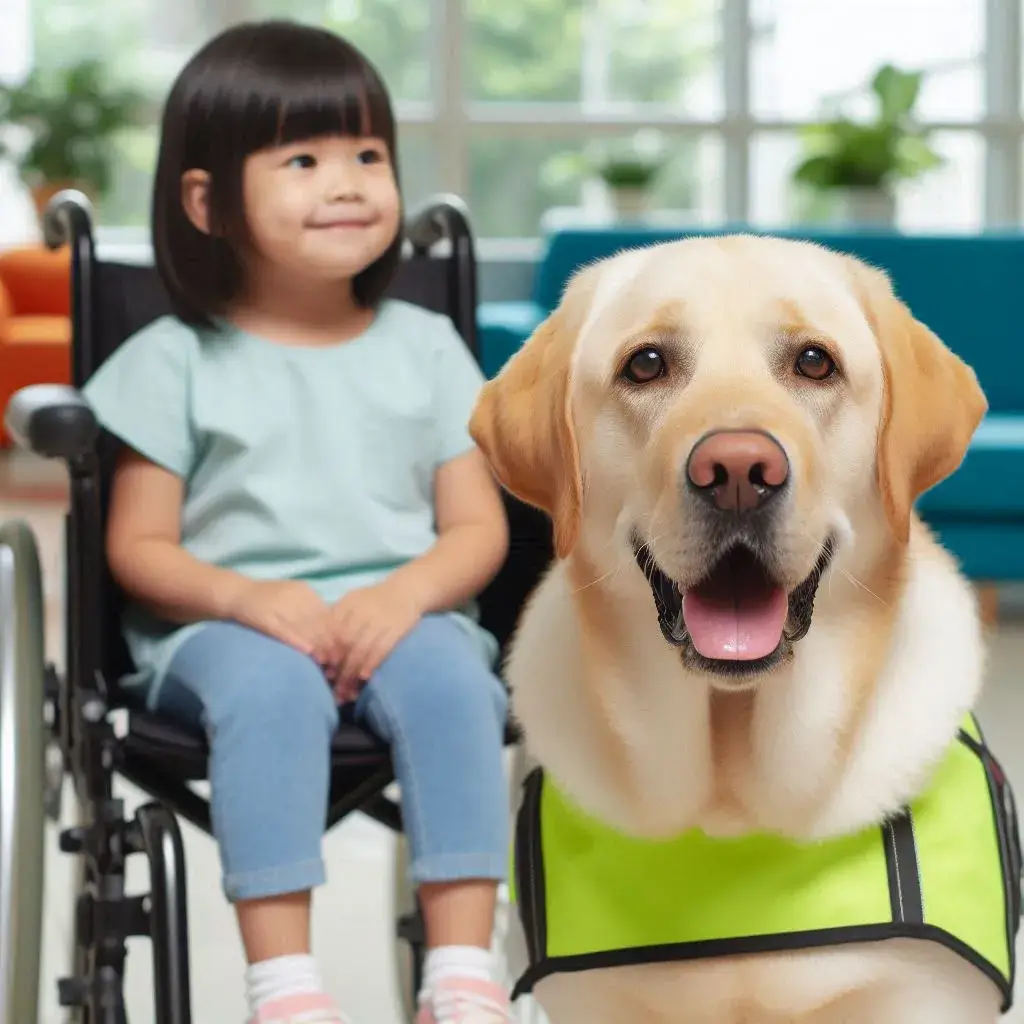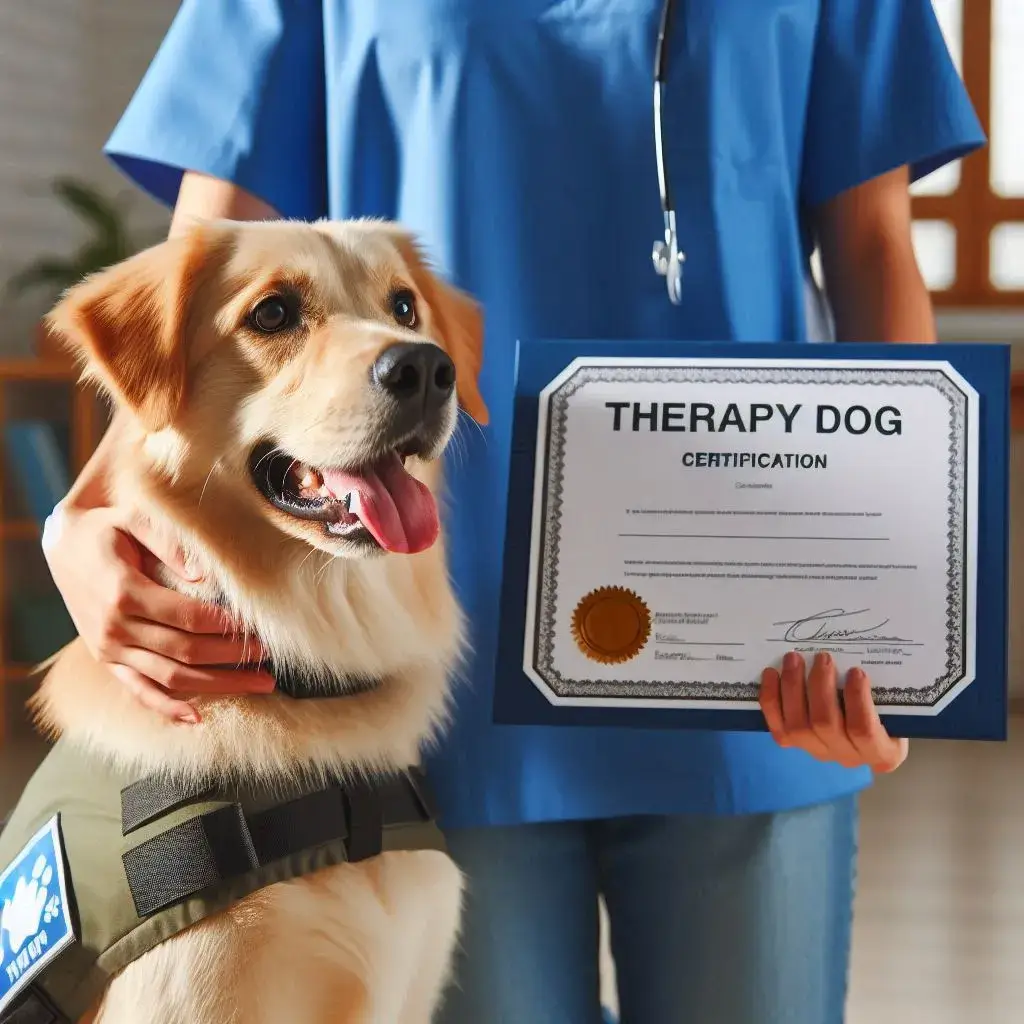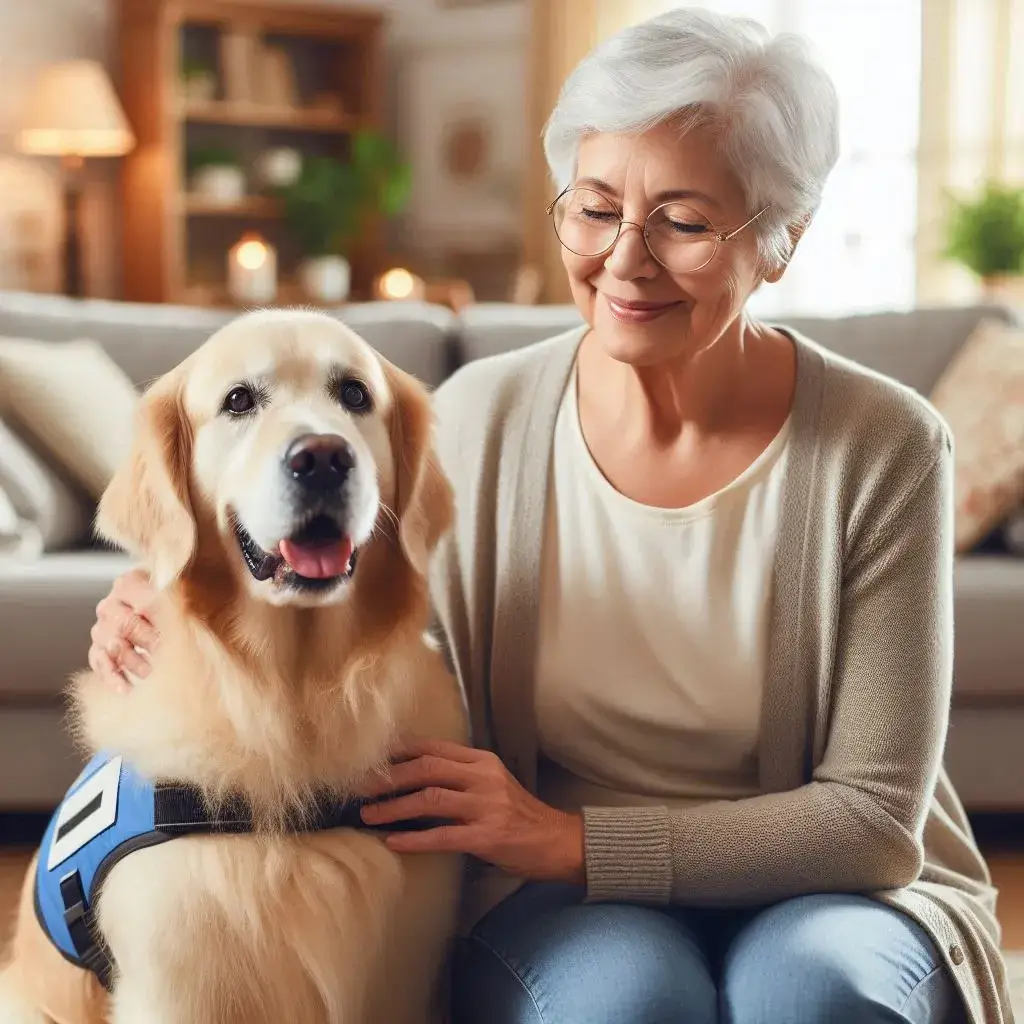Introduction to Therapy Dogs
Therapy dogs bring comfort, joy, and emotional support to people in hospitals, nursing homes, schools, and other settings. Unlike service dogs, therapy dogs are not trained to perform specific tasks for one person but to provide general emotional assistance to many. If you have a dog with a calm temperament and a love for people, you may wonder how to train them to become a therapy dog. This comprehensive guide will walk you through the process, from understanding the role of a therapy dog to getting your dog certified and ready to serve.
What Is a Therapy Dog?

A therapy dog is a specially trained canine that provides comfort and support to people in various settings. They are often used in hospitals, schools, disaster areas, and nursing homes to help reduce stress, anxiety, and loneliness.
Therapy Dogs vs. Service Dogs
It’s important to differentiate between therapy dogs and service dogs. Service dogs are trained to perform specific tasks to assist a person with a disability, while therapy dogs provide emotional comfort and are not limited to assisting just one individual.
Qualities of a Good Therapy Dog

Not all dogs are suited to be therapy dogs. The ideal therapy dog should have the following qualities:
- Calm temperament: Therapy dogs need to remain calm in various environments.
- Sociable nature: They should be friendly and enjoy interacting with people.
- Good health: A healthy dog is more capable of providing the necessary emotional support.
- Obedience: Therapy dogs must follow commands reliably.
Steps to Train Your Dog to Be a Therapy Dog

Training your dog to be a therapy dog involves several steps, including basic obedience training, socialization, and specialized therapy dog training. Let’s break down these steps in detail.
1. Evaluate Your Dog’s Suitability
Before you begin training, assess whether your dog has the right temperament and qualities to be a therapy dog. Consider the following:
- Behavior with strangers: Does your dog remain calm and friendly when meeting new people?
- Reactions to loud noises: Can your dog stay composed in noisy or chaotic environments?
- Health and age: Is your dog in good health, and does they have the energy to handle therapy work?
Signs Your Dog Is a Good Candidate
- Friendly and outgoing: Enjoys meeting new people and other animals.
- Calm demeanor: Handles stress well and remains relaxed in different situations.
- Obedient: Follows commands without hesitation.
Signs Your Dog Might Struggle
- Aggression or fear: Exhibits fear or aggression towards strangers or other animals.
- Hyperactivity: Struggles to remain calm and focused.
- Health issues: Has health conditions that could impede therapy work.
2. Start with Basic Obedience Training
Basic obedience training is the foundation of all therapy dog training. Your dog needs to reliably follow commands in various settings, even in the presence of distractions.
Key Commands to Teach
- Sit: Your dog should sit on command and remain in position until released.
- Stay: Your dog must stay in place, even with distractions.
- Come: A strong recall command is essential, ensuring your dog returns to you immediately when called.
- Leave it: This command helps prevent your dog from picking up or engaging with inappropriate items.
Training Tips
- Consistency: Use the same commands and gestures each time to reinforce learning.
- Positive reinforcement: Reward your dog with treats, praise, and play for following commands correctly.
- Short sessions: Keep training sessions short and fun to maintain your dog’s interest and prevent frustration.
3. Focus on Socialization
Socialization is critical for therapy dogs, as they will encounter a variety of people, animals, and environments in their work. Proper socialization helps your dog feel comfortable and behave appropriately in different settings.
Socialization Techniques
- Expose to different environments: Take your dog to various places, such as parks, shopping centers, and public transportation.
- Meet different people: Introduce your dog to people of all ages, including children, the elderly, and individuals with disabilities.
- Interaction with other animals: Ensure your dog is comfortable around other animals, including dogs, cats, and smaller pets.
Handling New Experiences
- Stay calm: Your demeanor can influence your dog’s behavior. Stay calm and composed to help your dog feel secure.
- Gradual exposure: Start with less intense experiences and gradually increase exposure to more challenging situations.
4. Introduce Specialized Therapy Dog Training
Once your dog has mastered basic obedience and socialization, you can move on to specialized therapy dog training. This involves teaching your dog how to interact appropriately in a therapy setting.
Training for Therapy Work
- Focus on patience: Therapy dogs must be patient, as they may need to sit or lie down for extended periods while being petted or interacting with people.
- Gentle interactions: Train your dog to be gentle, especially when interacting with elderly individuals, children, or people with mobility issues.
- Adapt to medical equipment: Expose your dog to medical equipment such as wheelchairs, crutches, and hospital beds to ensure they are comfortable around them.
Practical Exercises
- Simulated therapy sessions: Practice therapy sessions at home or in safe public spaces to prepare your dog for real-world situations.
- Desensitization training: Gradually expose your dog to various stimuli (e.g., loud noises, crowded spaces) to build resilience.
Certifying Your Therapy Dog

To officially become a therapy dog, your dog must be certified by a recognized therapy dog organization. Certification ensures that your dog meets the necessary standards and is ready to provide therapy in various settings.
Requirements for Certification
Each therapy dog organization may have its requirements, but most will evaluate your dog based on:
- Behavior and temperament: Your dog must demonstrate a calm and friendly demeanor.
- Obedience: Your dog should reliably follow commands.
- Health: Your dog must be in good health, with up-to-date vaccinations and a recent veterinary check-up.
Popular Therapy Dog Organizations
- Therapy Dogs International (TDI): Offers certification for therapy dogs that meet their specific requirements.
- Pet Partners: Another well-known organization that certifies therapy dogs and handlers.
- Alliance of Therapy Dogs (ATD): Provides certification for therapy dogs across various settings.
The Certification Process
- Evaluation: A therapy dog evaluator will assess your dog’s behavior, obedience, and temperament.
- Observation: Some organizations require your dog to complete a set number of supervised visits before certification.
- Registration: Once certified, your dog will be registered as a therapy dog, and you can begin visiting approved facilities.
Preparing for Therapy Visits
Once your dog is certified, it’s time to prepare for actual therapy visits. This includes understanding the expectations of therapy work, choosing the right environments, and preparing your dog for the experience.
Choosing the Right Settings
Therapy dogs can work in various environments, including:
- Hospitals: Providing comfort to patients, families, and healthcare staff.
- Nursing homes: Offering companionship and reducing loneliness among residents.
- Schools: Helping students cope with stress, anxiety, or learning challenges.
- Disaster areas: Offering emotional support to individuals affected by traumatic events.
Assessing the Environment
- Calmness: Choose settings where your dog can remain calm and focused.
- People’s needs: Consider the specific needs of the people your dog will be helping.
- Your dog’s comfort: Ensure the environment is not overly stressful for your dog.
What to Bring on Therapy Visits
Preparation is key to a successful therapy visit. Here’s a checklist of items to bring:
- Therapy dog ID: Always carry your dog’s certification and ID badge.
- Water and bowl: Keep your dog hydrated during visits.
- Treats: Use treats to reward good behavior and reinforce training.
- Grooming supplies: Bring a brush or wipes to keep your dog clean and presentable.
- Leash and collar: Use a secure leash and collar or harness that’s comfortable for your dog.
Managing Your Dog’s Behavior During Visits
Even well-trained therapy dogs can encounter challenging situations. Here’s how to manage your dog’s behavior:
- Stay vigilant: Watch for signs of stress or discomfort in your dog.
- Take breaks: Allow your dog to rest between sessions if needed.
- End on a positive note: Ensure each visit ends with positive reinforcement, such as praise and treats.
Maintaining Your Therapy Dog’s Training and Health
Continuous training and health maintenance are crucial for a therapy dog’s effectiveness. Regular check-ups, ongoing training, and proper care help ensure your dog remains happy, healthy, and ready to serve.
Ongoing Training
Even after certification, regular training helps reinforce good behavior and obedience.
- Weekly practice sessions: Continue practicing commands and therapy exercises.
- Advanced training: Consider advanced obedience or specialty classes to keep your dog’s skills sharp.
- Group training: Join therapy dog training groups for regular socialization and skill-building.
Health Maintenance
Keeping your dog in top health is essential for therapy work.
- Regular veterinary visits: Schedule routine check-ups and vaccinations.
- Balanced diet: Ensure your dog receives proper nutrition to maintain energy and health.
- Exercise: Regular exercise is crucial to keep your dog physically and mentally fit.
Grooming and Hygiene
A clean and well-groomed dog is essential for therapy work.
- Regular grooming: Bathe and groom your dog regularly to keep their coat and skin healthy.
- Nail trimming: Keep your dog’s nails trimmed to avoid discomfort or injury during visits.
- Dental care: Brush your dog’s teeth and provide dental chews to maintain oral health.
Challenges and Rewards of Therapy Dog Work
Training a therapy dog can be both challenging and rewarding. Understanding the potential difficulties and the profound impact your dog can have on others is essential for success.
Challenges of Therapy Dog Training
Training a therapy dog requires time, patience, and commitment. Some of the challenges you may face include:
- Time commitment: Training and certification can be time-consuming.
- Behavioral setbacks: Your dog may experience behavioral issues that require additional training.
- Emotional demands: Therapy work can be emotionally demanding for both the handler and the dog.
Rewards of Having a Therapy Dog
Despite the challenges, the rewards of having a therapy dog are immense.
- Positive impact: Your dog can make a significant difference in the lives of people in need.
- Strengthened bond: Training and working as a therapy team can strengthen the bond between you and your dog.
- Personal fulfillment: Watching your dog bring joy and comfort to others is incredibly fulfilling.
FAQs About Training a Therapy Dog
1. Can any dog become a therapy dog?
While many dogs have the potential to become therapy dogs, not all dogs are suited for this role. The ideal therapy dog should have a calm temperament, be friendly with people, and possess strong obedience skills.
2. How long does it take to train a therapy dog?
The training process can vary depending on the dog’s temperament and previous training. On average, it can take several months to a year to fully train and certify a therapy dog.
3. Do therapy dogs need to be certified?
Yes, certification from a recognized therapy dog organization is typically required for your dog to officially work as a therapy dog in various settings.
4. How often should a therapy dog be trained?
Ongoing training is important to maintain your dog’s skills. Regular practice sessions, as well as periodic refreshers, help ensure your dog remains well-behaved and effective in therapy work.
5. What breeds make the best therapy dogs?
While any breed can potentially be a therapy dog, breeds known for their calm and friendly temperament, such as Golden Retrievers, Labradors, and Poodles, often excel in this role.
6. Can therapy dogs help with mental health issues?
Yes, therapy dogs are often used to help individuals with mental health issues such as anxiety, depression, and PTSD. Their presence can provide comfort, reduce stress, and improve overall well-being.
Conclusion: The Journey to Creating a Therapy Dog
Training your dog to become a therapy dog is a rewarding journey that can make a significant impact on the lives of others. It requires dedication, patience, and a deep understanding of your dog’s needs and abilities. By following the steps outlined in this guide, you can help your dog develop the skills necessary to provide comfort and support to those in need, creating a positive and lasting impact on your community.


